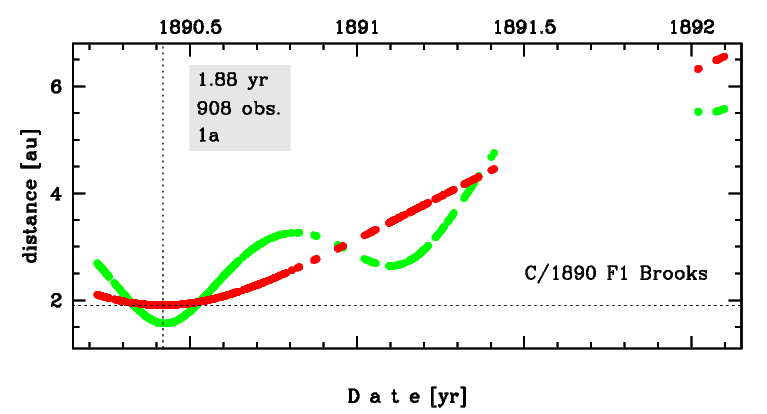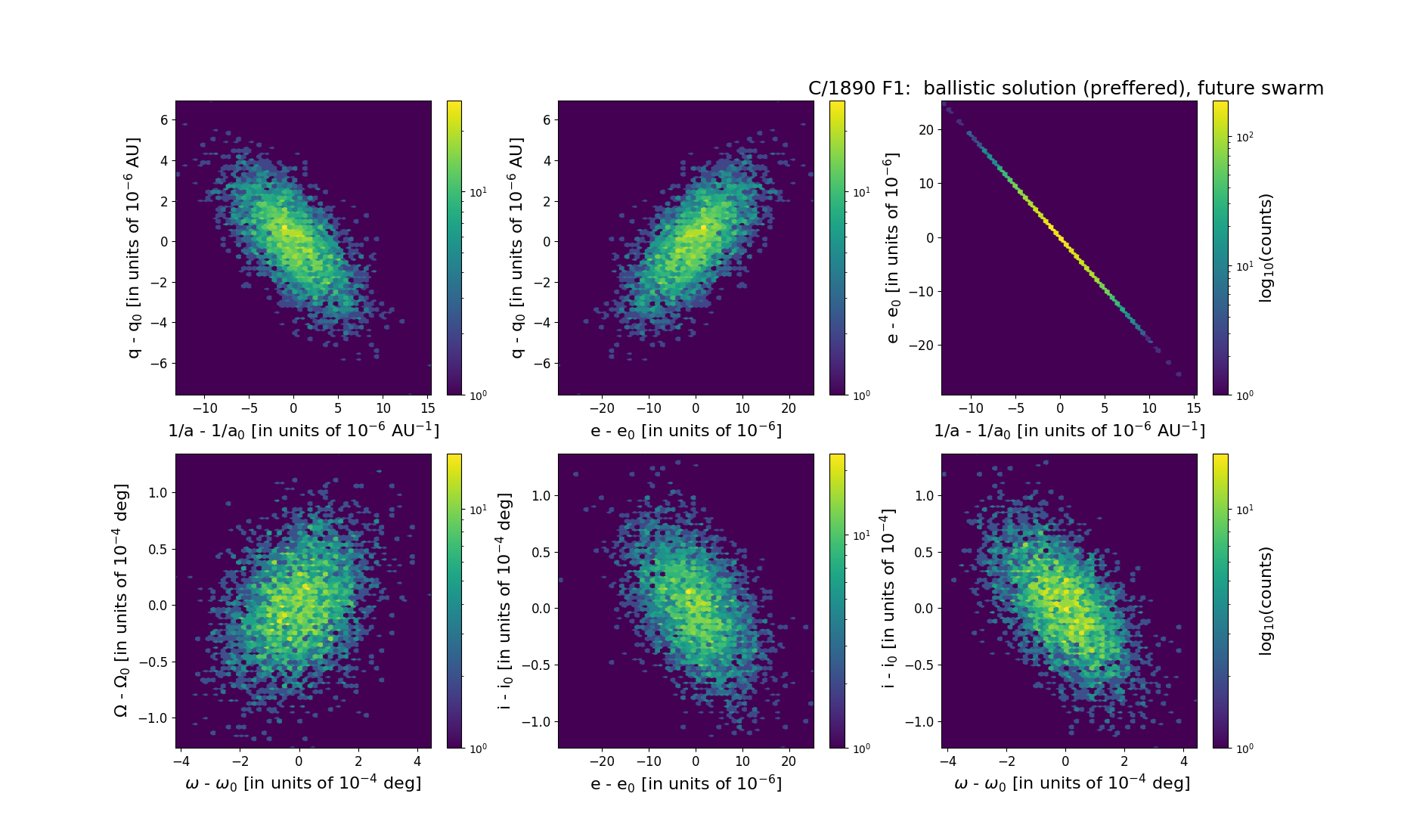C/1890 F1 Brooks
more info
C/1890 F1 was discovered on 20 March 1890 by William Robert Brooks (Smith Observatory at Hobart College, Geneva, New York, USA), that is about 2.5 months before its perihelion passage, and it was last seen on 5 February 1892 [Kronk, Cometography: Volume 2].
This comet made its closest approach to the Earth on 4 June 1890 (1.565 au), that is a day after perihelion passage.
The original positions of this comet were recalculated using modern star catalogues. Some extensive material of data processing is available at WikiComet.
Solutions given here are based on data spanning over 1.88 yr in a range of heliocentric distances from 2.10 au through perihelion (1.908 au) to 6.56 au.
This Oort spike comet suffers tiny planetary perturbations during its passage through the planetary system; these perturbations lead to a little bit shorter future semimajor axis (see future barycentric orbits).
C/1890 F1 was in the original sample of 19 comets used by Oort for his hypothesis on LPCs; however, according to presented here statistics for previous perihelion passage, dynamical status of this comet is uncertain - new calculations shows that its previous perihelion distance was about 14.3 au (nominal orbit).
See also Królikowska and Dybczyński 2016.
This comet made its closest approach to the Earth on 4 June 1890 (1.565 au), that is a day after perihelion passage.
The original positions of this comet were recalculated using modern star catalogues. Some extensive material of data processing is available at WikiComet.
Solutions given here are based on data spanning over 1.88 yr in a range of heliocentric distances from 2.10 au through perihelion (1.908 au) to 6.56 au.
This Oort spike comet suffers tiny planetary perturbations during its passage through the planetary system; these perturbations lead to a little bit shorter future semimajor axis (see future barycentric orbits).
C/1890 F1 was in the original sample of 19 comets used by Oort for his hypothesis on LPCs; however, according to presented here statistics for previous perihelion passage, dynamical status of this comet is uncertain - new calculations shows that its previous perihelion distance was about 14.3 au (nominal orbit).
See also Królikowska and Dybczyński 2016.
| solution description | ||
|---|---|---|
| number of observations | 908 | |
| data interval | 1890 03 22 – 1892 02 05 | |
| data type | perihelion within the observation arc (FULL) | |
| data arc selection | entire data set (STD) | |
| range of heliocentric distances | 2.1 au – 1.91 au (perihelion) – 6.56 au | |
| detectability of NG effects in the comet's motion | NG effects not determinable | |
| type of model of motion | GR - gravitational orbit | |
| data weighting | YES | |
| number of residuals | 1644 | |
| RMS [arcseconds] | 2.61 | |
| orbit quality class | 1a | |
| orbital elements (barycentric ecliptic J2000) | ||
|---|---|---|
| Epoch | 2191 02 24 | |
| perihelion date | 1890 06 02.51726707 | ± 0.00020458 |
| perihelion distance [au] | 1.90422364 | ± 0.00000174 |
| eccentricity | 0.99982638 | ± 0.00000651 |
| argument of perihelion [°] | 68.848991 | ± 0.000115 |
| ascending node [°] | 321.904687 | ± 0.000037 |
| inclination [°] | 120.537491 | ± 0.000037 |
| reciprocal semi-major axis [10-6 au-1] | 91.18 | ± 3.42 |
| file containing 5001 VCs swarm |
|---|
| 1890f1z6.bpl |

